Silica gel
boundaries in Rhynie chert
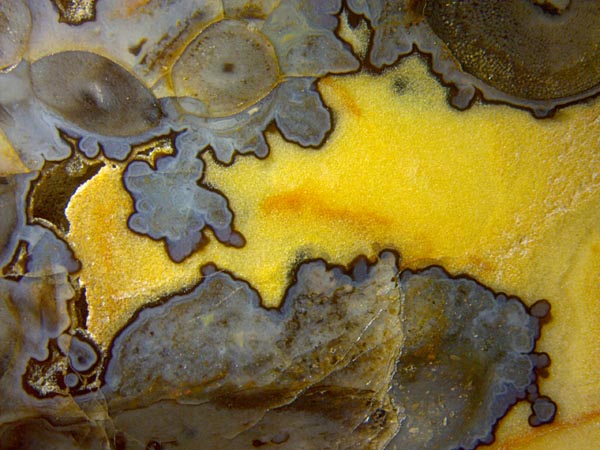
Fossiliferous cherts can reveal details of their formation from silica-rich
water with decaying plants. The acidic decay products
favour the formation of silica gel first inside the plants, then outside. The last deposited gel may appear as a conspicuous surface layer, as the black boundary on the bluish chalcedony in Fig.1.
This boundary with
the
aspect of a coating had been yellow or pale originally
but mostly become dark later (see Rhynie
Chert News 64
). Tiny
dark dots, possibly microbes, are often seen near the
boundary, as in Figs.2-5.
The dark
boundary in Fig.1 marks the end of a first stage of silicification
with bulging growth of silica gel protruding into the
surrounding water. In a later stage, yellow quartz
grains grew in the water.
Fig.1: Once silica gel and water-filled cavity, now chalcedony and yellow quartz grains.
Image width 11mm. (Same sample at Rhynie
Chert News 64
).
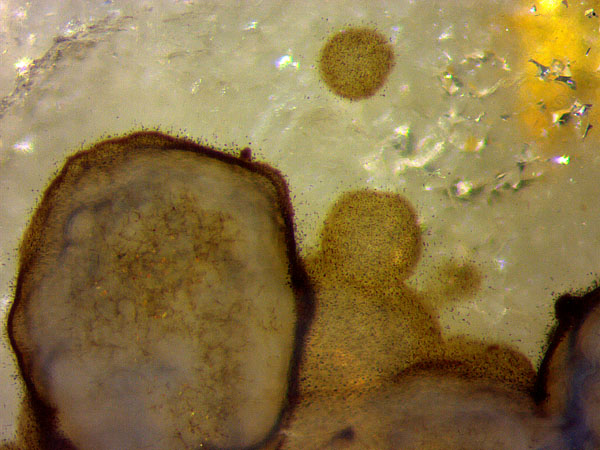
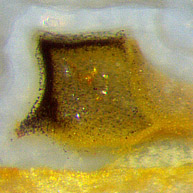
Fig.2
(near left): Small cavity in silica gel, lining along the
walls with transition from pale yellow to
dark. Image width 0.45mm.
Fig.3 (far left): Formerly water-filled space
with silica gel protruding, with transitions
from pale to dark, with
tiny dots near the surface.
Image width 1.4mm.
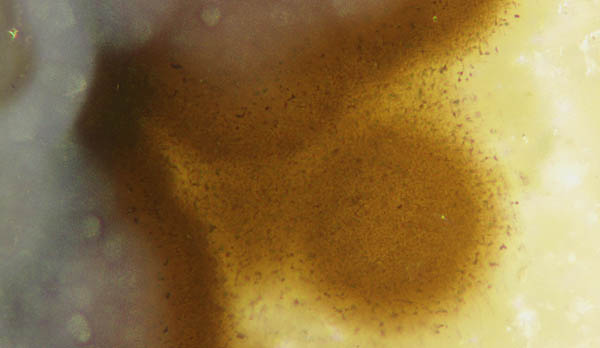
Fig.4 (right): Silica gel boundary (in Fig.1 below right). Image width 0.5mm.
Apparently
the bulging gel parts in Fig.3 had formed separately.
The smaller bulge in the middle with
a reflected light shining dimly through from behind
seems to indicate that the gel lump is not filled with dark dots.
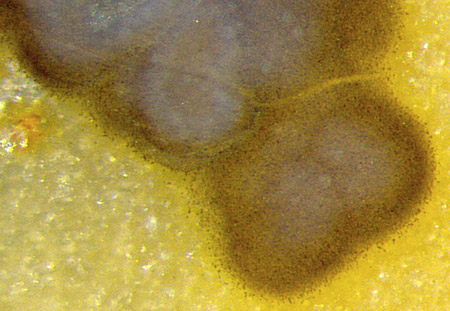
Fig.5 (below left): Silica gel,
beset with microbial dots, broken.
Width of the image 0.9mm.
The
crack in Fig.5 shows that silica gel is really a gel in the sense of
solid state mechanics but not merely a sticky fluid. There are no microbial dots in the gap, hence their
proliferation had ended before the gel broke.
A few more observations on gel boundaries will be presented in
a forthcoming contribution.
Samples: Rh7/10 (0.23kg), found by S. Weiss in
2003, Part 1: Fig.5, Part 2:
Figs.1,2,4;
pictures taken by Gerd Schmahl,
Dresden: Figs.2,4,5.
Rh2/88 (3.3kg), obtained
from Shanks
in 2003, Part 1: Fig.3.
H.-J.
Weiss 2020 modified 2021
 |
 |
167 |








